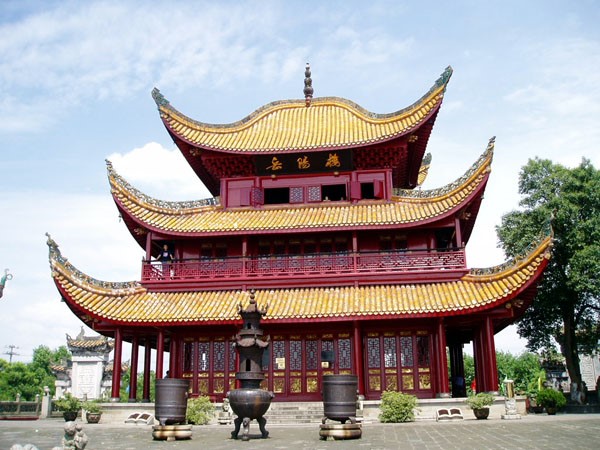Cultural Landscape
Baling Landscape
Yueyang, formerly knowns as Baling or Yuezhou, is a historic and cultural city with a long history of more than 2,500 years. Located in the northeast of Hunan Province, neighboring Jiangxi Province in the east and Hubei Province in the north, Yueyang was a hinterland of military importance during the past dynasties. Nowadays, renowned for so many historic interests, Yueyang is ranked as one of China's tourist destinations.
Yueyang Tower

Yueyang Tower, known as the No.1 Tower in China, is one of the ten historical and cultural towers in China, one of the four ancient towers nationwide, and one of the three famous towers in regions south of the Yangtze River. Yueyang Tower is also regarded as an important calling card in Yueyang City.
Yueyang Tower was built near Dongting Lake. Its predecessor was the military parade building of Lu Su, a general of Eastern Wu during the Three Kingdoms period (220 AD - 280 AD). The tower enjoys a history of nearly 1,800 years. Since the beginning of the Tang Dynasty (618-907), the building has gradually become a resort of sightseeing and poetry creation for tourists and literati from all generations. Fan Zhongyan wrote an essay for the building titled "Note on Yueyang Tower" that has been passed down through the ages. Outstanding poets such as Li Bai, Du Fu, and Meng Haoran created famous poems at this site.
Chinese source: Hunan Daily; Voice of Hunan

As legend goes, Junshan Island was originally a rock blown into Dongting Lake when Nuwa, a goddess in ancient Chinese mythology, was repairing the wall of heaven. The 72 small peaks were said to be incarnations of 72 maids who became small peaks to provide protection to people around the island in the lake.
One of the attractions of Junshan Island is the mottled bamboo, which has a love story behind it. During the Yu and Shun period (2257-2208BC), Emperor Shun died suddenly during a trip to Cangwu, and his two concubines, E'huang and Nuying burst into tears when they heard the news on Junshan Island. Their tears fell onto the surrounding bamboo, staining them with purple spots forever. Later, the two concubines drowned themselves to go with Emperor Shun to Paradise, and their tombs are also on Junshan Island.
There is another famous site on Junshan Island called Liu Yi Well.
Quzi Memorial Temple


Virtues including filial piety, harmony, diligence, and honesty have passed down among the people living in the 600-year-old Zhang Guying Village.
The Zhang Guying Ancient Architectural Complex is a registered key site under national-level protection. Since the early Ming Dynasty (1368 – 1644), Zhang Guying moved to settle in this place, and then his descendants have lived together here for more than 600 years.

